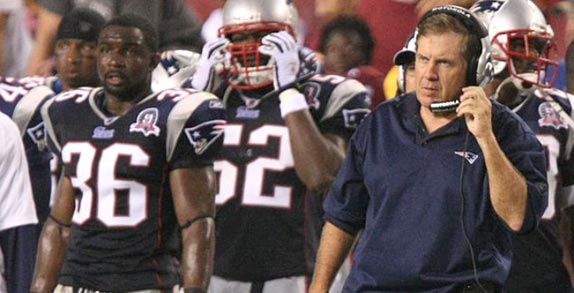Try asking any Monday morning quarterback about blown fourth-down play calls in the NFL and you are guaranteed passionate opinions. In most fourth-down plays, an NFL team will punt or try for a field goal. But, occasionally, teams decide to do something that is viewed as risky – attempt a fourth-down conversion or “go for it.”
Vanderbilt Owen Graduate School of Management professor Ranga Ramanujam, David Lehman from The National University of Singapore and other researchers studied 22,603 fourth-down decisions over five NFL seasons to understand when teams were more likely to attempt a seemingly risky fourth-down conversion. The goal is to apply this research to organizations. These findings are reported in a forthcoming study in Organization Science.
Teams close to winning are more likely to take risks

They report that teams who were behind were generally more likely to go for it on a fourth-down and the more points behind a team was to their opponent, the more likely a team was to go for it. This effect became stronger as the game progressed. In other words, a trailing team was more likely to go for it later in the game rather than earlier in the game. Interestingly, this was only the case for teams trailing by a margin of about three touchdowns or less. Teams trailing by wider margins actually became less and less likely to go for it as the game progressed.
“The idea here is that as the deadline approaches, the time available begins to factor in to the decision to try something different in response to underperformance,” said Ramanujam.
The results suggest that as the game clock runs down, teams within striking distance of their opponent grow more and more eager to try out risky plays that might help them win the game at hand. However, teams outside that striking distance grow increasingly concerned with “saving face” or avoiding a risky move that might backfire and make them look stupid.
“We argue that this same tension between chasing organizational goals and avoiding reputational threats can help us understand risk-taking behaviors in other types of organizations,” said Lehman.
Study illuminates the role of feedback and deadlines
The goal of the study was to understand how risky organizational decisions might be shaped by performance feedback (i.e., the extent to which current performance is above or below the aspired level of performance) and deadline proximity (i.e., time remaining before an important deadline such as an earnings report date.)
“We know that deadlines play an important role in organizational life. Part of what we’re trying to understand is how deadlines affect the well-known relationship between under-performance and risk-taking,” said Ramanujam. [rquote]“In other words, when are organizations more likely to deviate from routines? This is an important question for understanding a variety of important organizational outcomes such as innovation, change and fraud.[/rquote]”
Risk-taking is the exception, not the rule
Ramanujam is quick to acknowledge, “Although many managers have a natural talent for finding a football analogy for every business situation, football games are very different from the operations of business organizations. However, they are sufficiently similar in some key respects to make these findings potentially relevant to business organizations.”

For instance, fourth-down decisions typically are organizational decisions in that they are based on the inputs of various people on and off the field and are based on performance relative to a target and in reference to a deadline.
Ramanujam also notes that unlike prior studies that analyzed whether fourth-down conversions are as risky as they are made out to be, this study was about understanding when teams were more likely to go for it.
“What is especially relevant to our study is that teams treat this as a non-routine choice. In more than 80 percent of fourth-down plays, the teams punted the ball,” said Ramanujam.
The paper is titled “The Dynamics of the Performance-Risk Relationship within a Performance Period: The Moderating Role of Deadline Proximity.”
The Vanderbilt Owen Graduate School of Management is ranked as a top institution by BusinessWeek, The Wall Street Journal, U.S. News & World Report, Financial Times and Forbes.
Learn more about Vanderbilt Owen Graduate School of Management.
[Media Note: Vanderbilt has a 24/7 TV and radio studio with a dedicated fiber optic line and ISDN line. Use of the TV studio with Vanderbilt experts is free, except for reserving fiber time. A video interview with Ramanujam can be seen at http://news.vanderbilt.edu.]